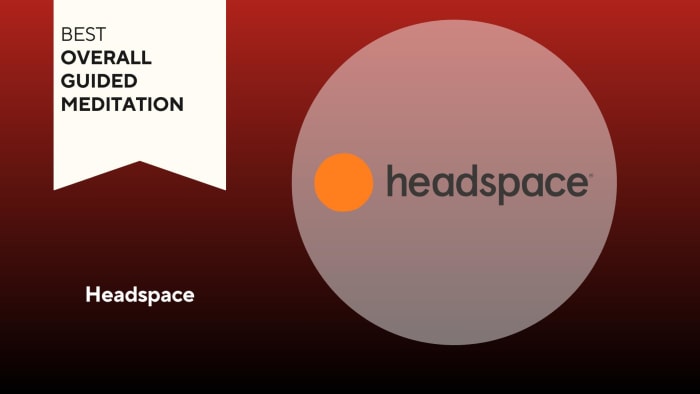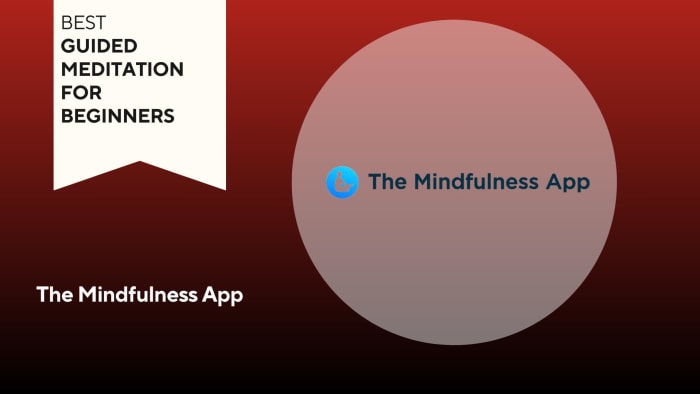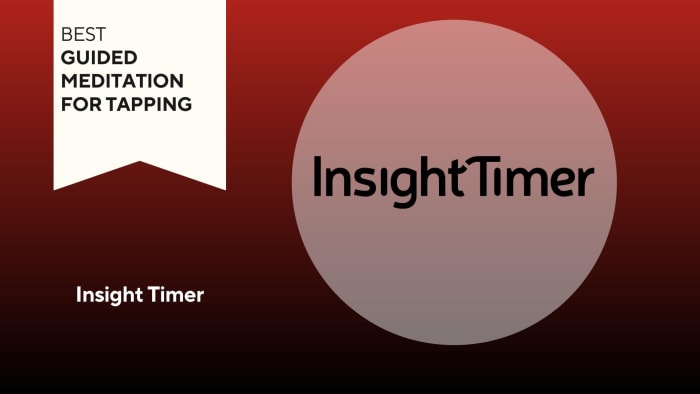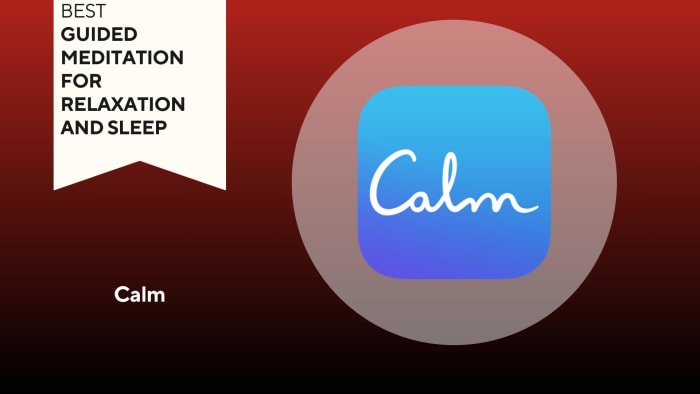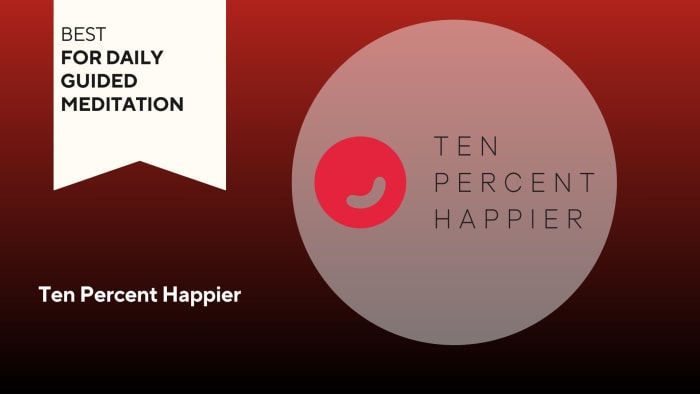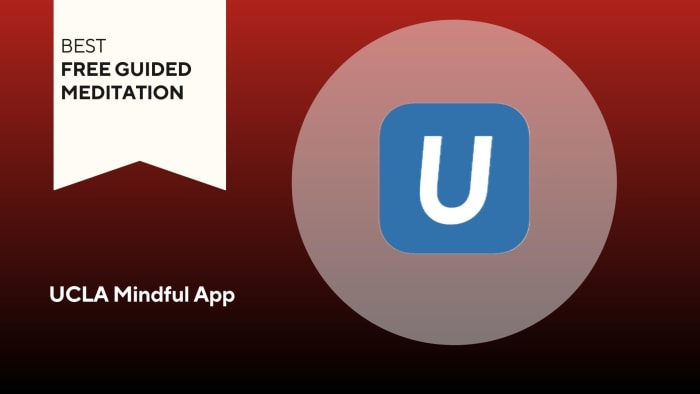The products featured in this article have been independently reviewed. When you buy something through the retail links on this page, we may earn commission at no cost to you, the reader. The Sports Illustrated editorial team is not involved in the creation of this content. Learn more here.
If you’ve always wanted to develop a daily meditation practice but don’t think you have the time, patience or knowledge, your gateway to inner peace and well-being may actually be in your pocket. The marketplace is brimming with meditation apps for practitioners of all types: total beginners, time-crunched skeptics, parents seeking self-care, students struggling with focus and individuals who simply want to learn to let go and enjoy the present moment. There are countless options, so how do you know which meditation app is the right one for you?
The answer is research, and we’ve done it all for you. In this article, you’ll learn about the best guided meditation apps available and how to assess them based on critical factors like your goals, expectations, preferences, level of experience and how much (if anything) you’re willing to pay. We’ve also looked at studies and worked with meditation experts to answer common questions about guided meditation, outline the potential benefits and assemble tips on how to get the most out of your practice.
Mental health apps are not a substitute for a licensed professional. If you’re in crisis or having suicidal thoughts, text or call the Suicide and Crisis Help Line at 988.
Our Picks for the Best Guided Meditation Apps:
- Best Overall Guided Meditation: Headspace
- Best Guided Meditation for Beginners: The Mindfulness App
- Best Guided Meditation for Walking: Aura
- Best Guided Meditation for Tapping: Insight Timer
- Best Guided Meditation for Relaxation and Sleep: Calm
- Best for Daily Guided Meditation: Ten Percent Happier
- Best Guided Meditation for Visualization Meditation: Headspace
- Best Free Guided Meditation: UCLA Mindful App
Best Overall Guided Meditation: Headspace
Headspace at a glance:
- Cost: $12.99/month or $69.99/year
- Standout Features: Beginner basics course, sleep meditations, stress and anxiety tracking
- Length of Meditation: 3–20 minutes
Since launching in 2010, Headspace has expanded its library to over 500 listening options, including themed meditations, meditation timers, courses, sleep stories, music and soundscapes, mindful movement classes and meditation podcasts. You can explore the app’s programming through daily personalized recommendations or browse its vast library, which includes courses of all levels. Sanam Hafeez, Psy.D., neuropsychologist and director of Comprehend the Mind, is a fan of Headspace’s variety, playful animations and structured foundation course for beginners.
Most meditations are between five and 20 minutes long, but you can also access three-minute “SOS” meditations with titles like “Burned Out,” “Losing Your Temper” and “Panicking.” This is an example of one of Headspace’s strengths: it does an excellent job of contextualizing meditation and helping users understand how to use it in their everyday lives. A quick scroll, and you’re bound to find a course or single meditation that speaks to your current situation, whether you’re “Healing After a Breakup” or “Managing Financial Stress.”
While Headspace undoubtedly has something for everyone, whether or not every user will find it is questionable. The app sorts its content into categories, but you can’t search, filter or favorite meditations. Some reviewers—even those who ultimately enjoy meditating with Headspace—find the user interface frustrating and the catalog of content “bloated” and “uncurated.”
Headspace offers a free 14-day trial subscription, but then you’ll have to sign up for a subscription, as there’s no free tier. However, students do qualify for a significant discount, and there are special deals for families, educators and employers.
What we like:
- Includes over 500 diverse meditation options
- Beginner-friendly; guided meditations are approachable and relatable
- Lots of extra content, like sleep programs, music for focus and mindful movement
What to consider:
- App layout and navigation are not intuitive
Best Guided Meditation for Beginners: Mindfulness
The Mindfulness App at a glance:
- Cost: $79.99/year
- Standout Features: Personalized recommendations, beginner foundations course, large roster of expert instructors, stress test, offline capabilities
- Length of Meditation: 3–99 minutes
With its seamless onboarding classes, personalized recommendations and plenty of beginner-level content, The Mindfulness App is geared toward meditation newcomers and their needs.
Before committing to an annual subscription, users can take advantage of a seven-day free trial to explore the app’s programming with “Get Started.” This five-day course introduces mindfulness concepts and breathwork with warm and welcoming instruction. Non-subscribers can also take a quick stress test, which the app uses to customize recommendations. To unlock additional content (there are over 400 meditations spanning 20 topics, including sleep and stress relief), you can upgrade to premium or, in some cases, share the app on social media in exchange for access to a few extra meditations.
The Mindfulness App allows you to save meditations so you can revisit your favorite classes and teachers, and there’s an option to download content for offline listening. Other fun features include sound preferences (adjust the volume of a meditation’s background track or swap wind chimes for crashing waves) and daily notices, which deliver inspirational messages.
Most user complaints center around the app’s paywall and pricing structure. There’s no monthly option, so you must pay for an annual membership upfront. And trading meditations for social media promotion is often unappealing, especially for those hoping to reduce their time online.
What we like:
- Easy-to-follow introductory course for beginners
- Over 40 meditation instructors with diverse backgrounds
- Personalized recommendations and customizable features.
What to consider:
- After the free trial, subscribers must pay for an annual membership upfront
Best Guided Meditation for Walking: Aura
Aura at a glance:
- Cost: $59.99/year
- Standout Features: Walking meditations, multi-day programs, meditative playlists, live meditations and events, one-on-one coaching
- Length of Meditation: 3–120+ minutes
The sheer volume and diversity of Aura’s content sets it apart from other guided meditation apps. It hosts over 13,000 wellness tracks that aren’t limited to guided meditation. Users can also explore therapy-based instruction, ASMR, meditative stories, hypnosis, prayer, mood-based music, sleep meditations, live events and, for additional fees, one-on-one coaching with therapists and other trained professionals.
If you’re looking for guided walking meditations, Aura has those, too. Walking tracks, which range from three to over 30 minutes, are distributed throughout the app, but a quick search pulls up multiple options, including “Walking Gratitude Meditation,” “Morning Walking Meditation” and “Dog Walking Meditation.” Walkers may also enjoy using Aura’s music playlists as the soundtrack for independent walking meditations.
Related Post: The Health Benefits of Walking vs. Running
Other notable features include offline listening, mood tracking, gratitude journaling, a visual breath timer and search functionality which allows users to filter tracks by duration, instructor and preferred level of guidance. Aura also records meditation streaks and makes recommendations based on your data.
Aura has millions of downloads and consistently high ratings, though some critics find its seemingly endless library overwhelming and cluttered. Others consider membership, which is only available as an annual subscription, to be cost-prohibitive. Luckily, Aura offers a free one-week trial that includes all premium content, so you can try it out and decide if it’s right for you.
What we like:
- Comprehensive mental health content delivered by qualified professionals
- Extensive library is easy to navigate thanks to an intuitive layout and advanced search functionality
- App is consistently refreshed with new and innovative content
What to consider:
- Membership is only available as an annual subscription
Best Guided Meditation for Tapping: Insight Timer
Insight Timer at a glance:
- Cost: Free features, premium content costs $9.99/month or $59.99/year
- Standout Features: Free content, tapping instruction and courses, live yoga, customizable meditation timer
- Length of Meditation: 1–90+ minutes
Emotional Freedom Technique (EFT), aka “tapping,” is a meditative practice rooted in Traditional Chinese Medicine and cognitive behavioral therapy. It involves acknowledging stressors and repeating positive affirmations while using your fingers to tap on acupressure points throughout the body.
Tapping can feel a little strange at first, but guided sessions like the ones offered through Insight Timer can help you learn how to use the technique effectively and with confidence. An in-app search for “tapping” renders multiple tracks, including “Tapping for Beginners,” “Tapping for Better Sleep” and “Tapping Stress Away.” These courses, like much of Insight Timer’s content, are completely free.
This is one of the reasons Ruth Lerman, MD, recommends Insight Timer as a meditation tool. Lerman, an internist specializing in breast health and disease at Beaumont Health in Royal Oak, Michigan, became a certified mindfulness-based stress reduction (MBSR) instructor and teacher trainer after surviving three separate battles with cancer.
“A lot of other apps will offer a little free section,” she says. “Insight Timer has a ton of free content. Much more so than a lot of the other apps offer.”
Users will find guided meditations focused on an array of topics, including deep sleep, stress management and focus, plus additional features like mood tracking, live yoga classes, offline listening, meditation music and an online journal. Upgrading to “MemberPlus” unlocks premium tracks, courses, challenges and advanced audio and journaling features.
Based on the Insight Timer’s 27 million-strong user base and consistently high ratings, most customers are satisfied. Those who submitted 1- or 2-star reviews typically complained about technical issues, like freezing, crashing and inaccurate timers.
What we like:
- Large selection of free content
- Diverse roster of well-respected instructors
- Live sessions and the ability to connect with other users
What to consider:
- Some users report bugs and issues accessing their accounts
Best Guided Meditation for Relaxation and Sleep: Calm
Calm at a glance:
- Cost: Limited free content, or full access for $12.99/month or $69.99/year
- Standout Features: Sleep stories, calming soundscapes, sleep-specific playlists, kids content, casting/streaming options
- Length of Meditation: 3–25 minutes
As its name suggests, Calm specializes in guided meditations that support deep relaxation and restful sleep. Even the app’s design, which favors shades of blue and provides the option to customize nature sounds and imagery, promotes feelings of serenity.
Calm’s sleep content gets top billing on its home screen and includes meditations, soundscapes, soothing playlists and sleep stories, some of which are narrated by celebrities like Cillian Murphy and Harry Styles. For waking hours, Calm also offers guided meditations for focus, stress reduction, energy and confidence, as well as tracks that incorporate gentle movement, like stretching and walking. Other popular features include image-guided breathing exercises (aka the “Breath Bubble”), mood tracking and gratitude journaling.
While Calm offers a handful of tracks and features for free, you’ll need to upgrade to a premium subscription to access most content (including the dulcet tones of Harry Styles’ voice). The app’s seven-day trial and Calm’s YouTube channel can help you decide if it’s worth the investment.
For more information, check out our in-depth Calm review.
What we like:
- Aesthetically pleasing design and user interface
- Extensive selection of relaxation and sleep-related meditations
- Celebrity-narrated sleep stories
What to consider:
- Free library is limited
Best for Daily Guided Meditation: Ten Percent Happier
Ten Percent Happier at a glance:
- Cost: Limited free content, full access for $99.99/year
- Standout Features: World-class instructors, meditation challenges, adjustable track durations, meditation podcasts
- Length of Meditation: 5–90 minutes
Ten Percent Happier has a few hooks that encourage users to keep coming back day after day. The first is an impressive lineup of world-class instructors who know how to engage both newcomers and seasoned meditators. Lerman recommends the app for this reason, noting the access to “solid teachers” and “luminaries” in the meditation world.
Secondly, tracks are arranged in a way that encourages daily practice. While you can dabble in “singles,” much of the app’s guided meditation is organized by multi-day courses. Year-round challenges and milestone badges gamify the experience by celebrating streaks and total sessions.
Perhaps most importantly, Ten Percent Happier encourages daily meditation without demanding or expecting it. You’ll find plenty of relatable content, like the “Imperfect Meditation” challenge and tracks like “When Meditating Gets Boring.” Additionally, guided meditations have adjustable durations, so you can, for example, trim a 20-minute class to five minutes if you’re short on time.
The app’s free content is minimal, so if you expect to use the app every day, you’ll want to upgrade to a premium membership. At $99 per year, Ten Percent Happier is one of the pricier apps, but a free, seven-day trial is available.
What we like:
- Challenges and milestone badges gamify the experience
- Access to leaders in mindfulness and meditation
- Option to choose between single meditations and comprehensive courses
What to consider:
- Membership fee may be cost-prohibitive for some
Best Guided Meditation for Visualization Meditation: Headspace
Headspace at a glance:
- Cost: $12.99/month or $69.99/year
- Standout Features: Meditation technique tutorials, expert instructors, live group meditations
- Length of Meditation: 3-20 minutes
Visualization meditation, or using a mental image as your point of focus during meditation, sounds simple. But, in practice, it can be tricky. You may struggle to hold a consistent picture in your mind or wonder, “Am I doing this right?”
Headspace incorporates visualization into many of its guided meditations (“Letting Go of Stress” and “Growing Your Creativity” are two popular examples) with simple prompts and encouraging instruction from expert teachers, like former Buddhist monk and Headspace cofounder Andy Puddicombe. Each meditation provides a non-judgmental space to practice visualization, and wandering thoughts are gently recognized as “thinking” as the listener finds their way back to their image of focus.
The app’s “Techniques and Support” section includes a video that explains visualization and other tutorials that address common obstacles, like restlessness and boredom, and offer tips for more effective and enjoyable meditation. The app offers a 14-day free trial so you can see if it’s right for you.
As noted above, Headspace’s user interface is its Achilles Heel; not every meditation incorporating visualization is labeled as such, and there’s no way to search or filter for visualization meditations.
What we like:
- “Techniques and Support” section addresses common questions and concerns in a non-judgmental manner
- Simple, beginner-friendly incorporation of visualization into guided meditations
- Warm, relatable instructors
What to consider:
- Headspace’s user interface can be challenging to navigate
Best Free Guided Meditation: UCLA Mindful App
UCLA Mindful App at a glance:
- Cost: Free
- Standout Features: Clear layout, simple navigation, multiple languages available
- Length of Meditation: 3–19 minutes
Developed by the Mindful Awareness Research Center (MARC) at the University of California, Los Angeles (UCLA), UCLA Mindful App is refreshingly simple and straightforward. The basic layout includes a “Getting Started” section with video tutorials that cover meditation fundamentals, like mindfulness, posture and how to choose a meditation. From there, users can pick from eight basic meditations or six health and wellness meditations.
Compared to other apps’ extensive content libraries, just 14 meditations may seem insufficient. However, through thoughtful curation, UCLA Mindful App packs a lot of variety into its boutique offering. Users can choose from loving-kindness meditation, body scan meditation, sleep-focused meditation, breath meditation, meditation for working through difficulties and more. There’s also a timer for independent meditation, links to MARC’s live virtual meditations and a meditation podcast.
Practitioners who value design and aesthetics may not appreciate UCLA Mindful App’s utilitarian look and feel. And while the app’s content is high quality, the relatively small assortment may not be enough to keep some users engaged. But, for a free app, this is a solid option.
What we like:
- 100 percent free, research-based content
- Simple, easy-to-navigate layout
- Curated, diverse assortment of meditations
What to consider:
- Number of available meditations (14) is relatively small
- Most meditations are led by the same instructor
What Is Guided Meditation?
“In guided meditation, practitioners receive verbal instructions and guidance from a narrator or teacher throughout the session,” explains Hafeez. This practice differs from non-guided meditation, which is typically conducted independently without any external direction. While those participating in a guided meditation session take cues from an instructor or meditation leader, independent meditators often focus on their breath or a mantra.
However, the level or amount of instruction can vary from one guided meditation to the next, Lerman says. “There may be a lot of empty space in there for you to practice with just a few words. And then there are some guided meditations that have a lot of talking in them,” she says. In fact, the lines between “guided” and “regular” meditation are often blurred. “Even if people go on a silent meditation retreat, there are periods generally every day where there is some guided meditation offered,” Lerman points out. “That kind of gives people the instructions to stay with for the rest of the day.”
Types of Guided Meditation
While you may encounter some meditations that don’t fit neatly into one specific category, there are a few common types of guided meditation you will likely encounter as you learn more about the practice and experiment with different apps.
Mindfulness-Based Stress Reduction (MBSR): Often used to help people deal with stress, depression, anxiety and pain, MBSR is an eight-week meditation curriculum that includes meditation, mindful movement and body awareness.
Mindfulness Meditation: Mindfulness meditation emphasizes remaining focused on the present moment and learning how to gently bring wandering thoughts back to deep breathing and body awareness.
Walking Meditation: Walking meditation combines intentional movement with mindfulness. As you walk, you bring awareness to your body’s senses, your surroundings and the ground beneath your feet.
Loving-Kindness Meditation (LKM): Loving-kindness meditation has roots in Buddhist teachings and uses the repetition of positive phrases to express love and compassion to oneself and others.
Guided Imagery: Guided imagery, or visualization meditation, is a mindfulness practice that engages all five senses by focusing on a mental image or scenario.
Chakra Meditation: Chakra meditation is intended to balance or unblock the seven chakras, which, according to some Hindu and Buddhist teachings, are the body’s energy centers.
Meditative Yoga: Meditative or mindful yoga combines asanas (poses) with meditative practices.
Body Scan: During a body scan, a practitioner mentally scans their body, typically from their head to their toes, noting any sensation they’re experiencing in each body part.
Breath-Focused Meditation: Breath-focused meditation is a simple form of meditation that uses inhalation and exhalation to generate focus and awareness.
How to Use a Guided Meditation App
Most guided meditation apps will include courses or individual meditations designed for beginners. Lerman recommends starting with an introductory-level offering, even if you have meditation experience, as it will help you learn to navigate the app and may deepen your understanding of foundational concepts. “I’ve listened to Joseph Goldstein’s introductory course [on the Ten Percent Happier app] multiple times,” she notes.
Once you’ve become familiar with the app, explore different instructors, types of meditations, and meditation lengths. “Try sessions led by different guides to find voices and teaching styles that resonate with you,” Hafeez says. “Whether it's stress reduction, sleep improvement or focus enhancement, choosing relevant themes can make your practice more effective.”
Both Lerman and Hafeez emphasize the importance of consistency. “Set a doable goal,” Lerman says. “Having it be a daily practice is more important than the actual length of time,” Hafeez recommends sticking with a designated time of day, as keeping an appointment with yourself can help solidify a meditation habit. For example, try replacing early-morning scrolling with a five or ten-minute meditation. “Many people have their phone next to their bed, and the first thing they do in the morning is they pick it up and start something with it,” Lerman says. “So let that something be, before they even get out of bed, they use their meditation app.”
Whether you intend to meditate for five minutes or an hour, do your best to minimize distractions, including those that may come from your phone, says Jenna Nielsen, MSW, LCSW, clinician with ADHD Advisor. “You want to be sure to silence all other notifications when you are using your guided meditation app so your meditation is uninterrupted,” she says.
Additionally, supplementing your app use with human interaction—like meeting with a meditation teacher every month, regularly checking in with a meditation “study buddy” or attending a live Zoom group meditation—may help you feel more connected to your practice and, therefore, more likely to remain consistent.
Benefits of Guided Meditation
Guided meditation can make a meaningful impact on your physical, mental and emotional health. Here are some of the expert-touted and science-backed benefits of guided meditation.
Stress reduction
Research shows that mindfulness-based stress reduction (MBSR) meditation can actually change brain activity related to stress. “The amygdala processes emotions, especially fear, and activates our flight, fight or freeze response,” explains Lerman. “People who took the MBSR course found, at the end of the course, their amygdala activity would settle down more quickly. That reactivity would get back to baseline more quickly,” she says. (She does emphasize the referenced study, like most meditation studies, is based on in-person instruction, not the use of an app.)
Focus and concentration
“The structured nature of guided meditation, with its clear instructions, can enhance concentration and attention,” Hafeez says. One study published in Psychological Science found, after participating in a two-week mindfulness course that included 10 minutes of daily meditation, students improved their GRE reading comprehension scores and experienced fewer distracting thoughts and instances of mind wandering than before taking the course.
Enhanced self-awareness
“By following the guided prompts, individuals become more aware of their thoughts, emotions, and bodily sensations, fostering a deeper understanding of themselves,” Hafeez says. This enhanced awareness may help improve everything from confidence and self-compassion to communication skills.
Better sleep
“Guided Meditation can be a helpful tool for improving sleep quality. Practices that induce relaxation and reduce stress contribute to a calmer mind, making it easier for individuals to transition into a restful sleep,” Hafeez says. One meta-analysis that included 18 trials determined, while continued research is warranted, “The evidence suggests that mindfulness meditation can improve sleep quality in a variety of clinical populations with sleep disturbance.”
Improved mental health
A recent meta-analysis that included studies on depression, anxiety, stress and sleep quality found mindfulness-based interventions, including meditation, had a positive effect on mental health outcomes. A separate study found that MBSR meditation was just as effective at managing anxiety as escitalopram, aka Lexapro, a commonly prescribed medication for anxiety disorders.
Related Post: The Best Mental Health Apps
Healthy blood pressure
The potential benefits of guided meditation aren’t limited to mental and emotional health. A randomized clinical trial that included two separate studies found participants who followed a mindfulness meditation program designed for people with elevated blood pressure for six months saw a clinically relevant reduction in their blood pressure. They fared significantly better than the control group, which received a home blood pressure monitoring device, a doctor’s referral, and educational materials.
Related Post: The At-Home Best Blood Pressure Monitors
Chronic pain relief
Meditation may offer a non-pharmacological treatment option for individuals struggling with acute and chronic pain. One study found participants who meditated while a painful heat was applied to their leg experienced about a 30 percent reduction in pain intensity. Analysis of participants’ brain activity showed a reduced connection between the thalamus, which delivers sensory information to the brain, and the parts of the brain that process thoughts and feelings. In a press release about the study, the researchers proposed that meditation helped participants separate the pain and suffering from their identity and experience in the world.
How to Choose the Best Guided Meditation App for You
Choosing the right guided meditation app for you can be a little overwhelming; there are many options, and if you’re a beginner, you may not know what you’re looking for. Don’t be afraid to test a couple of different products, but avoid switching back and forth between multiple apps, as you may get confused. Use an app exclusively for a week or so before moving (this is where the standard free trial comes in handy). Once you’re familiar with each offering, consider the following:
Price
You don’t have to spend a lot (or anything) for access to high-quality guided meditations. While some apps, like the UCLA Mindfulness App, are entirely free, others offer a portion (in Insight Timer’s case, a large portion) of their content at no charge. So, if your budget doesn’t allow for a new subscription fee, don’t be deterred—you have options.
However, in most cases, investing in a subscription will unlock a more extensive variety of meditations and other features to help enhance your experience and keep you engaged. Plus, knowing you’re on the hook for a monthly or annual fee may help keep you accountable to a daily practice.
User experience
At a minimum, you want an app that feels organized and easy to use. But also pay attention to how you respond to an app’s look and feel. Does seeing an instructor’s photograph help you foster a sense of connection, or do you prefer a fully illustrated interface? Do you find a minimalistic design calming or boring? What kinds of features do you want to be able to customize? Understanding your preferences will help you choose an app you’ll look forward to opening every day.
Content
Content—type, variety and breadth—is a key factor in choosing a guided meditation app. If, for example, you’re looking for guided meditations to improve your sleep quality, make sure the app you select contains plenty of sleep-specific content. If you enjoy experimenting with new meditations, look for an app that offers lots of different content so you don’t get bored. If you’re more likely to stick with a course, pick an app with meditations organized into programs. “You want to be sure the app is going to meet your guided meditation goals,” Nielsen says.
Instructors
Guided meditation is a vast landscape, and meditation instructors approach it from different backgrounds, experiences, and philosophies. You may resonate with one instructor’s teaching style more than others. As you research meditation apps, take classes from multiple instructors to find one (or more) with whom you feel connected.
Reviews
Before committing to a paid subscription, check recent ratings and reviews to get a sense of how satisfied users are with the app. First-hand accounts often provide insight into how often content is refreshed and a heads-up on technical glitches and poor customer service.
Recommendations
Chances are, someone you know uses a meditation app (Headspace alone reports over 70 million downloads). Poll friends, family and coworkers to get their app recommendations. Ask questions about their favorite meditations, which features they like and what they would change if they could.
Our Methodology: How We Chose the Best Guided Meditation Apps
When choosing the best guided meditation apps, we considered the diversity of the landscape of guided meditation and the meditation community. It was important to choose apps that highlighted different types of meditation, including those that incorporate movement, and catered to meditators of all levels of experience. We also considered cost, ensuring we included apps at various price points, including at least one free app.
Before evaluating each app’s features and content library, we interviewed an expert panel for information on guided meditation and advice on choosing a guided meditation app. The following subject matter experts were consulted:
- Ruth Lerman, MD, a certified mindfulness-based stress reduction (MBSR) instructor and teacher trainer
- Sanam Hafeez, Psy.D., neuropsychologist and director of Comprehend the Mind
- Jenna Nielsen, MSW, LCSW, clinician with ADHD Advisor
Guided Meditation FAQs
Are guided meditations more effective than meditating on your own?
It depends on your goals, preferences and level of experience,” Hafeez says. “Both approaches have their advantages, and what works best can vary from person to person.” However, if you’re a beginner, you may find it easier to establish a regular practice with some guidance and instruction at first.
Do guided meditations really work?
Everyone’s experience is different. But, as noted above, there is evidence that guided meditation may help with everything from stress reduction to chronic pain.
How long should a guided meditation last?
There’s no gold standard for meditation duration. Pick a length of time that you can commit to on most days, even if it’s just five or 10 minutes. “Focusing on the quality of your meditation, as opposed to a certain length of time, is crucial,” Hafeez says.
Is meditation and praying the same thing?
While some religions incorporate meditative practices, and meditating may impact someone’s prayer life, meditation and prayer are two separate things. You don’t need to be religious or believe in a higher power to practice meditation.
What is the first rule in meditation?
There are no strict “rules” for meditation, but it’s important to find a position in which you are comfortable and alert. Contrary to common depictions of meditation, you’re not required to sit on the floor in a cross-legged position. You may find that you prefer sitting in a chair or lying on the floor, for example.
What does meditation do to the brain?
Research shows that regular meditation can affect the amygdala, the part of the brain that processes emotions and activates the fight or flight response. Researchers found that amygdala activity settled down and returned to baseline more quickly after weeks of regular meditation.
Takeaway: Is Guided Meditation Right for You?
Considering the myriad benefits of guided meditation, most people can benefit from guided meditation. The key is to find a type of meditation that suits your goals, preferences and lifestyle. Experiment with different disciplines, styles and instructors, and once you understand what works for you, set an intention to make meditation a regular practice.
Prices are accurate and items in stock as of publish time.

